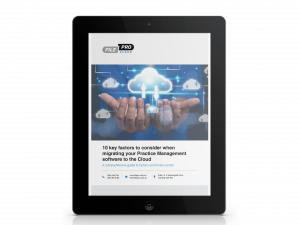As you’re no doubt aware, Professional Indemnity Insurance (PII) is required by every law firm in Australia. And because it’s a requirement, many firms simply set their premium, continue existing practices and expect their premium to increase every year.
Yet, since 2002, PII claims have been declining in NSW with 2014/15 recording the lowest level in 13 years.

This declining trend is even more impressive when compared to the growth in:
- Regulations governing client identification, client relationships and matter management; and
- The number of practicing solicitors (now 29,287 as at June 2015) and law firms (now 5,731 as at June 2015) in NSW over the same period.

In NSW, this decreasing trend in claims has paid off for law firms in lowering of PII premiums and, in 2014, a significant rebate was paid to policyholders. QLS also recently announced a significant reduction in insurance levies.
Why? The truth is, there are a number of steps you can take to actively reduce your risk of a PII claim ever taking place – in turn, lowering premiums.
Simone Herbert-Lowe, senior claims solicitor at LawCover, says “actuarial studies have confirmed that investment in risk management and claims prevention activities significantly reduces a law practice’s claims exposure.”
When reviewing guides and videos on claims prevention, risk factors centre on the following:
Be clear on who your client is
This is not only important to ensure there are no conflicts in your transactions, but particularly critical where family is involved. As summarised by Malcolm Heath, LawCover’s Legal Risk Manager, lawyers should explain that they aren’t acting for other family members and record it in a file note – write to your client confirming who you’re acting for.
Know your client
With an increase in identity fraud, checklists are a great way to establish new relationships on a sound basis – particularly regarding the costs of your service. Recording a file note with your new client’s full name, date of birth, and address (as well as attached identification) is imperative.
Avoid inadvertent legal advice
With increased use of social media, you should make sure that off-hand responses aren’t unintentionally construed as legal advice. When providing information, make it clear that it’s not legal advice and cannot be relied upon for that purpose.
Scope of your retainer
As reported in the Law Society Journal, care should be taken that retainers are not established inadvertently. The scope of work to be included in your retainer should be confirmed in writing. You should also cover what work is not included and what work the client has agreed to undertake. When new issues arise, review the retainer. And always properly terminate the retainer.
Maintain proper file notes
Documenting all client communication actions protect you, provides clarity to all parties and acts as an audit trail. File notes should be detailed and all advice given in writing and signed off by clients. Finally, be cautious of hidden risks in file transfers from other solicitors – ensure you’ve fully read the file before you commit to a retainer.
Simplify these processes with the right technology
While all these steps seem relatively simple, the risk often seems displaced from the actions themselves – e.g. notes you take today may not be needed for many months or even years.
As such, you want to streamline these processes as much as possible to ensure staff can easily follow these steps.
A systemised approach to create and safeguard client documentation can reinforce claim prevention behaviours of your staff yet is often overlooked as a risk mitigation opportunity. The following four steps leverage functionality of your practice management system.
1. Mobility
As discussed above, it is imperative to capture detailed file notes at all times. If your staff are out of the office they’ll often forget to transcribe their paper notes (or waste time doing so) or simply write notes from memory when they get back to the office (impacting their authority).
Mobility platforms that integrate with your practice management system can streamline this process, allowing your staff to record notes as they occur.
2. Centralised data
Storing all client information in a well-structured and secure directory will ensure maximum efficiency – particularly if an audit occurs. It will also mean you won’t experience down-time if a lawyer leaves the office. By organising information against a matter anyone can easily pick up where someone else left off.
3. Use less paper
Paper documents are inherently less secure than digital files. Even something as simple as a document left in the office risks disclosing confidential information acquired during a client engagement – violating section 9.1 of the Solicitor’s Conduct Rules.
Your practice management system should be able to streamline the saving and importing of all client documents to digital files.
4. Data ownership
If your practice management system is hosted in the cloud, it’s important to understand the cloud environment. Cloud is an all encompassing term and you should know the differences between public and private hosted server solutions.
This particularly concerns data accessibility – check that your agreement provides access to your information should you terminate the agreement or change your business structure, e.g. with a merger or acquisition. You should also ensure you have direct ownership of your data and can extract client documents in bulk (which many cloud platforms do not allow).
Reduced risk = increased efficiency = reduced premiums
The most significant factor that impacts PII premiums is your firm’s gross fee income. Your claim history and attendance at risk management seminars are also included into premium calculations.
The steps above will not only reduce your risk of claims, premium costs and other costs not covered by PII policies (should a claim be successful), but also help you run a more efficient and profitable firm.


